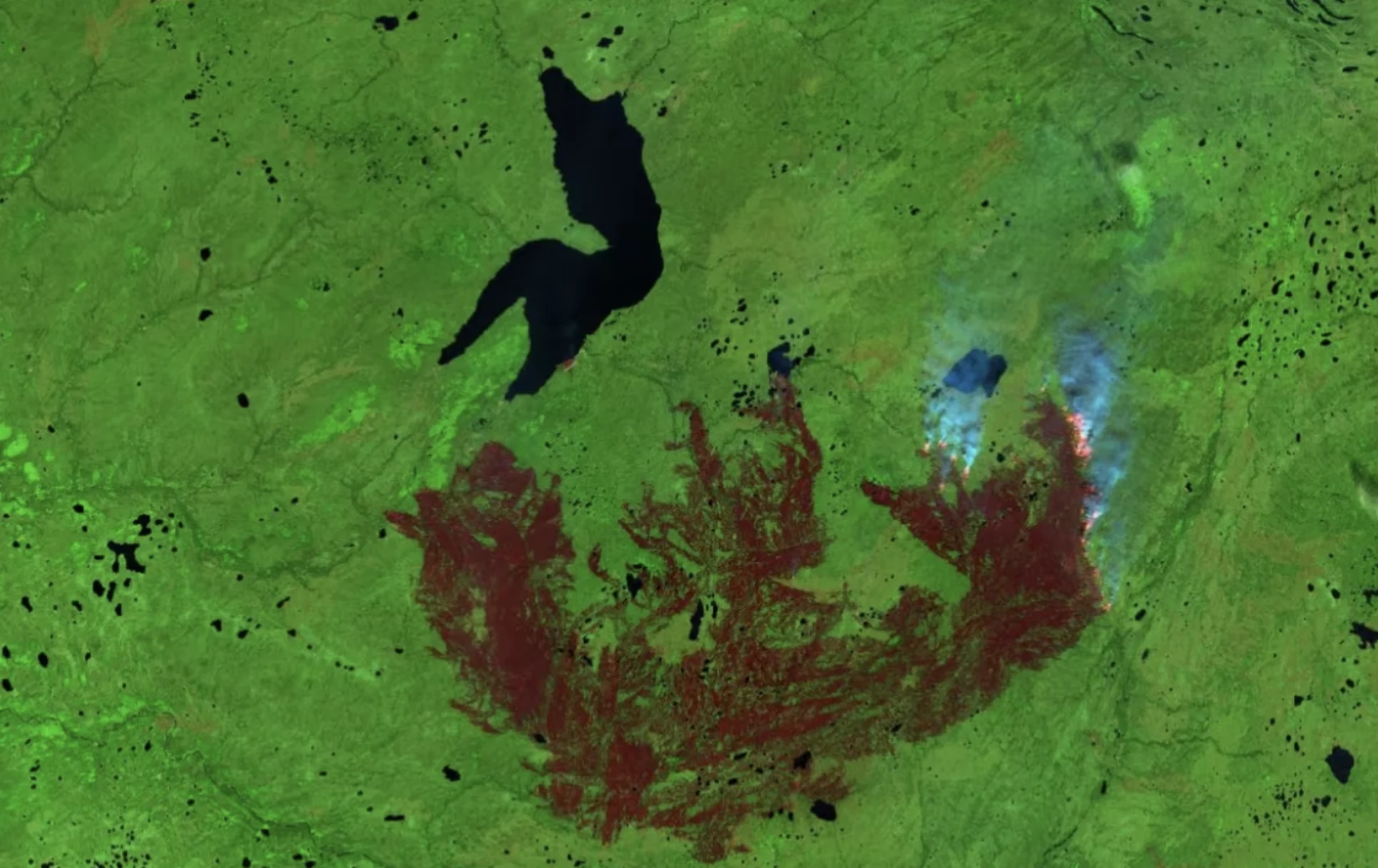
'Alarming': Sambaa K'e wildfire burn so big it could fit Yellowknife 24 times
Visit The Weather Network's wildfire hub to keep up with the latest on the active start to wildfire season across Canada.
The out-of-control wildfire burning near Sambaa K'e, N.W.T., is immense.
Having grown in explosive and unexpected fashion from 68,000 hectares to 250,000 hectares over a matter of days — the burned area in the N.W.T. covers a swath of land nearly 24 times the size of Yellowknife, and three times the size of Calgary.
It represents 41 per cent of the nearly 600,000 hectares that burned in last year's fire season in the N.W.T.
The Sambaa K'e wildfire forced residents to flee more than a week ago and has indirectly burned down one home. It's one of 21 fires in the territory so far that have contributed to what Mike Westwick, a wildfire information officer for the N.W.T. government, described as an "extraordinary start to the season."

(The Weather Network)
Wildfires will start as early as May, said Westwick, but they often stay smaller because the ground is cold, there's more moisture in the environment, and there aren't long spells of heat.
"That was certainly not the case this year," he said.
May brought record-breaking temperatures to the N.W.T, and Westwick said there's a drought in parts of the territory's Dehcho and South Slave regions — conditions that cause a fire to burn deep and hot, and make it hard to put out.
WATCH: A look at Canada's 2023 wildfire season so far
DON'T MISS: Top five ways human-caused wildfires start
Jennifer Baltzer, a Canada Research Chair in forests and global change at Wilfrid Laurier University who used to live outside Yellowknife, said it's hard to look at a single fire season and link it to our warming world. But when you step back and look at the broader trends and consider that forest fires are burning across Canada, she said "it just screams climate change."
"If we don't get a handle on fossil fuel emissions and greenhouse gas emissions this will continue to get worse," she said.

RELATED: In the wake of wildfires, forests’ ability to trap carbon 'goes up in smoke'
N.W.T. on its way to passing 10-year average
The wildfire season in the N.W.T. will carry on for months to come and already, in early June, 400,000 hectares of land have burned. That puts the territory well on its way to hitting the 600,000 hectares of land burned last year.
Westwick said looking at averages can give the territory a better idea of what to expect.
He said so far this year, the amount of land burned is triple the average measured over the last five years, and is also more than two thirds of the way toward hitting the 10-year average.
Baltzer calls that "certainly alarming."
"I think we're seeing this across the country. Most provinces and territories are seeing area burned that is far exceeding what they would experience at this point in the year, in a normal year," she said.

A satellite image using shortwave infrared measurements of the Sambaa K'e wildfire on Monday. It's 250,000 hectares in size, meaning it's nearly 24 times the size of Yellowknife and three times the size of Calgary. (Source: Sentinel-2/European Space Agency)
RELATED: Half of Canadians will experience unhealthy air quality due to smoke plumes
Baltzer said it seems like every year, one part of the country or another is experiencing a record-breaking year in terms of the area that's burned or wildfire severity. This was the first year she read headlines saying it's shaping up to be an unprecedented fire year in Canada as a whole.
"These systems are becoming more flammable as the whole, as the planet heats up, and this is happening faster at higher latitudes because of this Arctic amplification of warming."
WATCH: Tips to help protect yourself from wildfire smoke
The necessity of wildfire
Westwick and Baltzer both highlighted the importance of wildfire in the boreal forest.
Certain types of trees — jack pine and black spruce — need fire to open their cones and release their seeds, for example. Other types of plants with below-ground stems grow vigorously after a fire, said Baltzer.
SEE ALSO: How Indigenous burning practices can help curb the biodiversity crisis
"We're very lucky here in the Northwest Territories that there is more space between our communities and we're able to let those natural processes go more often without threatening things that folks value," said Westwick.
However natural wildfires are, fire behaviour scientists have long predicted that wildfires will become bigger and more intense as the climate continues to warm up, said Baltzer.
And the bigger and more intense they are, the more threat they can pose to communities in the N.W.T. and throughout Canada.
"We can change our course and everyone knows that," said Baltzer, noting the number of high-emission industries within the country.
"Canada can become a leader in this and really make an impact in terms of global emissions."
WATCH: Fireweed is the first flower to bloom after a wildfire
*This article, written by Liny Lamberink, was originally published for CBC News.










